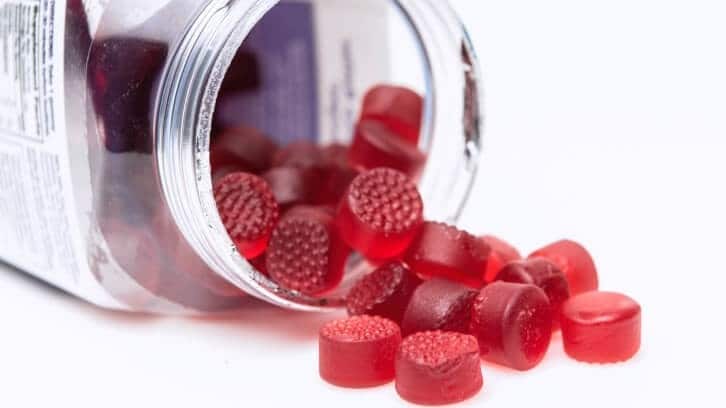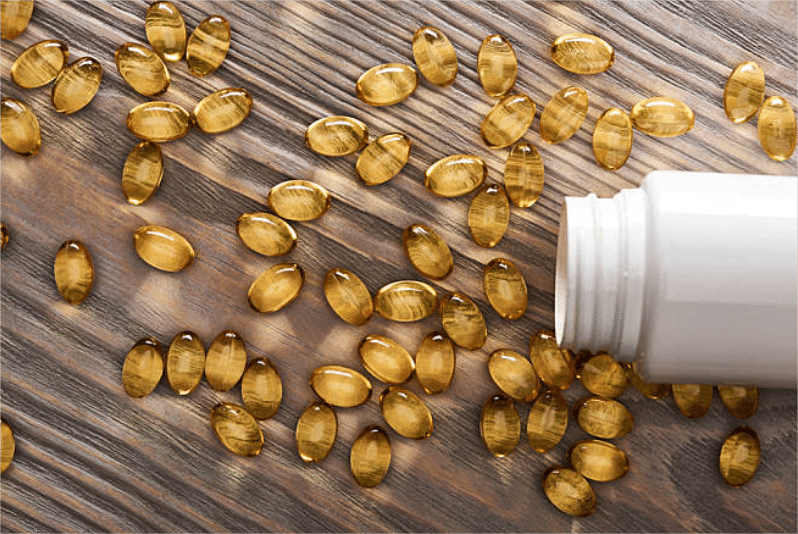In recent years, the food industry has seen a significant shift towards alternative proteins and ingredients due to growing health consciousness, dietary restrictions, and environmental concerns. Among these alternatives, gelatin and pea protein stand out as notable options. Although both have their unique benefits and applications, they cater to different needs and preferences. This article explores the distinctions between gelatin and pea protein, focusing on their sources, nutritional profiles, health implications, and uses in the food industry.
1. Introduction
The quest for healthier and more sustainable food options has led to the emergence of various protein sources and functional ingredients. Gelatin and pea protein, while both used widely in food products, serve different purposes and cater to different dietary needs. Gelatin is a traditional ingredient derived from animal sources, while pea protein is a plant-based alternative that has gained popularity in recent years.
2. What is Gelatin?
Gelatin is a protein obtained from the collagen found in animal connective tissues. It is commonly used as a gelling agent in food products, such as jellies, marshmallows, and gummy candies. Its unique properties come from the process of hydrolysis, which breaks down collagen into smaller protein fragments.
2.1 Source and Production
Gelatin is primarily derived from the skin, bones, and connective tissues of animals, such as cows and pigs. The production process involves several steps:
- Extraction: Collagen is extracted from animal tissues through boiling or acid hydrolysis.
- Purification: The extracted collagen is then purified and filtered to remove impurities.
- Hydrolysis: The purified collagen is hydrolyzed, breaking it down into gelatin.
- Drying and Grinding: The gelatin is dried and ground into a powder.
2.2 Types of Gelatin
There are two main types of gelatin, differentiated by their source:
- Type A Gelatin: Derived from pigskin, this type of gelatin is commonly used in the food industry.
- Type B Gelatin: Obtained from cowhide and bones, this gelatin is used in various food and pharmaceutical applications.
2.3 Uses and Applications
Gelatin’s ability to form gels, foams, and films makes it versatile in many applications:
- Food Industry: Used in products like gummies, marshmallows, and yogurt.
- Pharmaceutical Industry: Employed as a binder in capsules and tablets.
- Cosmetics and Personal Care: Found in products such as face masks and lotions.
3. What is Pea Protein?
Pea protein is a plant-based protein derived from yellow peas (Pisum sativum). It has become a popular alternative to animal-based proteins due to its nutritional profile and versatility. Pea protein is often used in protein powders, meat substitutes, and various processed foods.
3.1 Source and Production
The production of pea protein involves several steps:
- Cleaning and Peeling: Yellow peas are cleaned and peeled to remove any contaminants.
- Milling: The peas are ground into a fine powder.
- Separation: The protein is separated from the starch and fiber through a process of wet separation.
- Drying: The protein concentrate is then dried to create a powder.
3.2 Types of Pea Protein
Pea protein is available in different forms, including:
- Pea Protein Isolate: Contains around 80-90% protein and is used in protein powders and supplements.
- Pea Protein Concentrate: Contains about 60-70% protein and is used in various food products.
3.3 Uses and Applications
Pea protein’s versatility makes it suitable for a range of applications:
- Food Industry: Used in protein bars, shakes, and meat alternatives.
- Sports Nutrition: Included in protein powders and supplements for muscle building and recovery.
- Plant-Based Products: Employed in dairy-free and vegan products as a protein source.
4. Nutritional Profile Comparison
When comparing gelatin and pea protein, their nutritional profiles reveal significant differences. Understanding these differences is crucial for making informed dietary choices.
4.1 Gelatin Nutritional Profile
Gelatin is primarily composed of protein but lacks essential amino acids. It provides:
- Calories: Approximately 350-400 calories per 100 grams.
- Protein: Around 85-90 grams per 100 grams.
- Fat: Minimal fat content.
- Carbohydrates: Low or negligible carbohydrate content.
However, gelatin is deficient in essential amino acids such as tryptophan, which limits its overall nutritional value.
4.2 Pea Protein Nutritional Profile
Pea protein offers a more balanced nutritional profile, including:
- Calories: Approximately 350-400 calories per 100 grams.
- Protein: Around 80-90 grams per 100 grams.
- Fat: Low fat content, with minimal saturated fat.
- Carbohydrates: Contains some carbohydrates, including fiber.
Pea protein is a complete protein source, containing all essential amino acids except for methionine. However, it is generally higher in amino acids like lysine compared to gelatin.
5. Health Implications
Both gelatin and pea protein have distinct health implications, particularly in terms of dietary preferences, allergies, and overall health benefits.
5.1 Health Benefits of Gelatin
Gelatin is known for several health benefits, including:
- Joint Health: Contains glycine and proline, which support joint health and reduce inflammation.
- Digestive Health: May improve gut health by supporting the integrity of the gut lining.
- Skin Health: Collagen in gelatin can contribute to skin elasticity and hydration.
However, gelatin’s animal origin may not be suitable for individuals following vegetarian or vegan diets.
5.2 Health Benefits of Pea Protein
Pea protein offers a range of health benefits:
- Muscle Growth: Rich in branched-chain amino acids (BCAAs) that support muscle growth and recovery.
- Heart Health: Contains minimal fat and no cholesterol, which benefits heart health.
- Digestive Health: High fiber content can aid in digestion and promote satiety.
Pea protein is also suitable for individuals with dietary restrictions, including vegans and those with lactose intolerance.
6. Environmental Impact
The environmental impact of gelatin and pea protein varies significantly due to their different sources.
6.1 Environmental Impact of Gelatin
Gelatin production involves the use of animal products, which has several environmental concerns:
- Resource Use: Requires significant resources, including water and feed, to raise livestock.
- Emissions: Contributes to greenhouse gas emissions from animal farming.
- Waste: Produces animal waste and by-products, which can impact the environment.
6.2 Environmental Impact of Pea Protein
Pea protein production has a lower environmental impact compared to animal-based proteins:
- Resource Efficiency: Requires less water and land compared to livestock farming.
- Lower Emissions: Produces fewer greenhouse gases and has a smaller carbon footprint.
- Sustainable Farming: Peas can improve soil health and reduce the need for synthetic fertilizers.
7. Dietary Considerations
Choosing between gelatin and pea protein often comes down to dietary preferences and restrictions.
7.1 Vegetarian and Vegan Diets
- Gelatin: Not suitable for vegetarians or vegans due to its animal origin.
- Pea Protein: Ideal for vegetarians and vegans as it is plant-based and free from animal products.
7.2 Allergies and Intolerances
- Gelatin: Generally well-tolerated but may cause issues for those with allergies to specific animal products.
- Pea Protein: A good alternative for those with soy or dairy allergies but may cause reactions in individuals with pea allergies.
8. Culinary Uses
Both gelatin and pea protein have distinct culinary uses and applications.
8.1 Gelatin in Cooking
Gelatin is primarily used as a gelling agent in various recipes:
- Desserts: Used to make jellies, puddings, and mousses.
- Candies: Key ingredient in gummy candies and marshmallows.
- Thickening Agent: Used in sauces, soups, and gravies to improve texture.
8.2 Pea Protein in Cooking
Pea protein is versatile and can be used in various ways:
- Protein Powders: Added to shakes and smoothies for a protein boost.
- Meat Alternatives: Used in plant-based burgers, sausages, and nuggets.
- Baking: Incorporated into baked goods to increase protein content.
9. Conclusion
In conclusion, gelatin and pea protein serve different needs and purposes in the food industry. Gelatin, with its origins in animal connective tissues, is a versatile ingredient with applications in both food and non-food products. It offers benefits such as joint and skin health but is not suitable for those following vegetarian or vegan diets. On the other hand, pea protein is a plant-based alternative that provides a complete protein source, making it an excellent option for those with dietary restrictions or those seeking a more sustainable choice.
Choosing between gelatin and pea protein depends on individual dietary preferences, health goals, and environmental considerations. As the food industry continues to evolve, both ingredients will likely play important roles in meeting diverse consumer needs.




